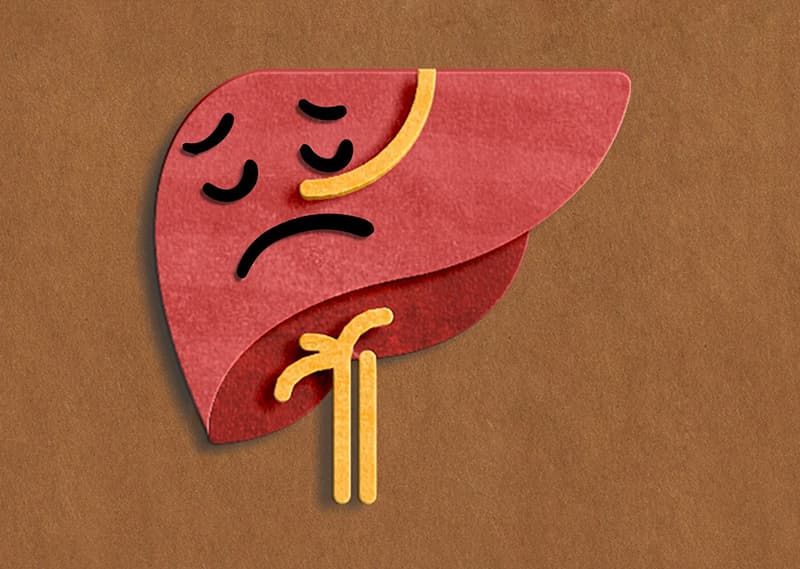Earlier Signs of Liver Damage That Nobody Should Ignore
The liver is a highly vital organ that takes care of filtering toxins, keeping metabolism running, producing essential proteins, and secreting bile for digestion. The fact that the liver is multifunctional in nature so that partial damage to its functions will result in the appearance of symptoms at the onset makes it essential to identify such symptoms of liver damage at the earliest.

Unaccountable Fatigue and Malaise
Among the most often described symptoms in the very earliest stages of liver damage is an abnormal, persistent sense of weakness or fatigue. Unlike the fatigue associated with an active day or a sleeping-filled night, this will be in excess of the amount of activity in between and will persist despite adequate rest. In other patients, ordinary activities start to seem extremely fatiguing. The loss of energy is felt to be the result of the liver’s compromised ability to adequately process nutrients as well as its diminished ability to detoxify.
Mild Abdominal Pain
One of the subtle but indicative signals of primary liver difficulty is the presence of mild pain or discomfort in the upper right part of the abdomen. The pain may be so minimal as to be mistaken for merely indigestion or minor upset stomach. The liver does reside just below the diaphragm in the right area, though, and the resulting inflammation or swelling—no matter how minimal—provides a dull pain or pressure in the area.
Alteration in the Appearance of Eyes
There is one very important, though sometimes subtle, heralding symptom: mild change in skin color or eye color. The earliest stage of liver damage triggers minimal shifts in skin and eye color which people can hardly detect. However jaundice with extreme yellow discoloration marks the main symptom of advanced liver failure. The symptoms of liver failure also include unexpected itching alongside color changes. The build-up of bile salts in blood leads to pruritus since these substances usually get destroyed by the liver before excretion. Skin becomes dry and hypersensitive along with developing chapped appearance during minimum accumulation.
Change in the Color of Urine and Stool
Metabolism of bilirubin stands as a vital liver function to process the waste product formed when red blood cells break down. The metabolic process for bilirubin breaks down when liver cells get damaged due to various reasons. Dark tea-colored urine together with light-colored pale stools often follow this condition. While such changes may be mild at first, they are significant clinical pointers that the liver is operating at less than its best.
Gastrointestinal Disturbances
The condition of the digestive tract is often altered by liver cell damage at its starting point. Patients who lose their appetite because of disease will naturally diminish their body weight. People with liver failure commonly develop nausea in addition to experiencing either gas-related or generalized belly fullness due to improper blood toxic substance elimination by an unhealthy liver. These gastrointestinal symptoms often appear in multiple illnesses so people commonly assign them to minor health issues thereby delaying correct identification of liver disease.
Abnormal Blood Clotting
Another less familiar but significant early warning symptom of liver damage is increased susceptibility to bruising or bleeding. The liver also manufactures the proteins which allow the blood to clot. A mild impairment in the liver will slow the synthesis of the clotting factors required, and thus allow for bruising more easily or for bleeding due to minor cuts to last longer. A typical symptom in the primary stages of liver disease may be the appearance of unusually large bruises when minor bumps occur in the skin or minor injuries.
Risk Factors and Early Intervention
There are several It should be remembered that the onset of such symptoms can be influenced by several risk factors. The combination of obesity with alcohol abuse and both type 2 diabetes and viral hepatitis types B or C produces greater susceptibility to liver damage. Prolonged drug usage combined with environmental toxic substances has the capability to generate stress within the liver.
Because the primary liver damage will be asymptomatic or present with nonspecific symptoms, populations at risk will have to be screened. Periodic physical examinations along with liver-function tests can enable practitioners to detect these minute changes before their progression to irreversible states like cirrhosis or liver failure.
 Disclaimer:
Disclaimer:
The content provided on our blog site traverses numerous categories, offering readers valuable and practical information. Readers can use the editorial team’s research and data to gain more insights into their topics of interest. However, they are requested not to treat the articles as conclusive. The website team cannot be held responsible for differences in data or inaccuracies found across other platforms. Please also note that the site might also miss out on various schemes and offers available that the readers may find more beneficial than the ones we cover.
Featured Articles
-
 Finance
FinanceIs Another Economic Recession Looming on the Horizon? How Regular Citizens Can Get Ready?
-
 Automotive
AutomotiveWhy a Used Toyota Is a Smart Investment
-
 Finance
FinanceTop 5 Best Cash-Back Business Credit Cards to Maximize Your Rewards in 2025
-
 Home & Garden
Home & GardenHow to Choose the Perfect Mower for Your Yard
-
 Home & Garden
Home & Garden8 Simple Rental Upgrades That Feel Like Home
-
 Health & Wellness
Health & WellnessThe Ultimate Guide to Running Gear for Better Fitness and Health Perks




